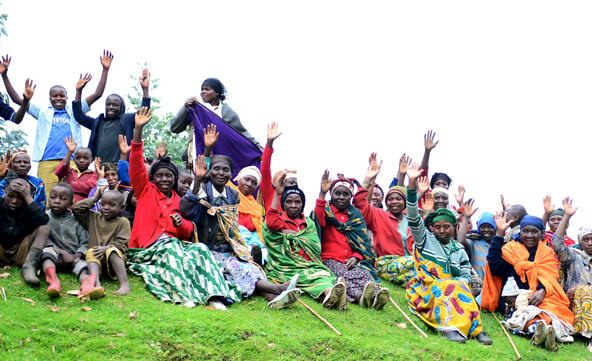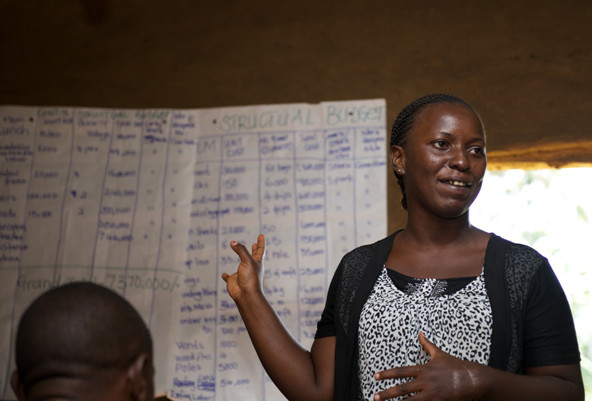As grassroots groups mobilize across the United States to “resist” the current administration, a question looms about how to sustain this remarkable level of engagement. Across party lines, President Trump’s low approval ratings have led to historic levels of citizen engagement, outsizing movements throughout the past 50 years of American history. This newfound engagement is a powerful vehicle for advancing the causes people care most about, whether they want safer streets or improved schools.
It’s important to remember that community organizing is not just a mechanism for opposition—it’s fundamentally a democratic process. The foundation of democracy is that people govern their institutions. Community organizing is one way for people to ensure that their voices are heard and, if done well, confront divergent views that challenge their own. Currently US political parties and addictive social media algorithms—developed to optimize headlines and clicks vs. social good—is hardening a talk at vs. talk with dynamic and exacerbating deep rifts in American society. Stated party strategies for both Republicans and Democrats have included blanket opposition to anything the other party puts forward. On Twitter, Facebook, and other social platforms, people push out messages, but rarely engage in dialogue that might challenge their own assumptions or thoughts. The beauty and the messiness of a democracy is that people come together to recognize each other as participants in a shared government; everyone can contribute and deliberate ideas, and then come to a compromise about how to move forward. Change is slow and at times twisted, but it’s steady if we choose to engage in it continually, not just once every four years.
Taking for granted the idea that we like democracy, how do we make it smarter? How do we use community organizing as a tool for progress, not just opposition, to strengthen the roots of our democracy?
For the last seven years, I’ve worked with communities across East Africa to build, test, and refine a facilitated collective action process to combat poverty in East Africa. Since 2010, the organization I co-founded, Spark MicroGrants, has partnered with more than 140 villages facing rural poverty across Uganda, Rwanda, and Burundi. We facilitate six months of weekly community meetings. At these meetings, an average of 64 women and men sit together, set goals for the future of their village and plan for a local project. Spark provides an $8,000 seed grant upfront to make the project a reality, as well as two-and-a-half years of management support.
Are you enjoying this article? Read more like this, plus SSIR's full archive of content, when you subscribe.
All of our community partners have launched local impact projects and engaged local government in driving change. We’ve witnessed the transformation of women’s roles in village meetings—from having no voice to being elected to leadership positions. We have seen families from diverse ethnic backgrounds break through historically tense relationships come together to build new schools for children and farms to feed families. Given the right process, tools, and resources, we’ve observed that people will come together to accomplish remarkable progress for their communities.
Below are three learnings from our work in East Africa that we believe can help strengthen and sustain community-organizing efforts in the United States and beyond.
1. Don’t just vote!
Voting is important, but other consensus-based processes actually elicit higher voter satisfaction. For example, we used to hold a vote for projects villages were considering—should the community pursue goat rearing or potato farming to improve food security? But we found that those who “lost” the vote would stop coming to the meetings, because they felt it was no longer their project and process. So we switched to a more complicated but successful framework of deliberation and compromise. In this setup, community members present their ideas, debate, and develop a compromised solution. For example, in Masiwe Upper Village in Uganda, a group of men wanted to rear cows for milk production, which would increase income and nutrition. The women wanted an agriculture project. Instead of voting, sidelining, and hardening the division between the gendered groups, members decided to start with an agriculture project—the easier of the two to maintain—and save money toward the purchase of cows. Both parties are still attending and contributing to meetings. A simple variation in facilitation style changed the outcome of the project, the long-term vision, and overall level of community engagement.
 Voting in Rwanda. (Photo by Perry Bindelglass, 2013.)
Voting in Rwanda. (Photo by Perry Bindelglass, 2013.)
Democracy is not just a voting process. It takes deliberation, compromise, and patience. The process of discussion and deliberation helps us make better decisions and bridge divisions. We are all part of shaping the future of our country. We must talk to our neighbors, work with our local communities, and take collective action to realize the long-term goal of a country that works for all. We must seek compassion and commitment from ourselves and from our neighbors to rebuild the muscle of our democracy: our own engagement.
2. Resource the movement.
For community meetings to matter, people need the right incentives for engagement: clear opportunities and financial resources to advance local causes. I remember working with our first community partner in Uganda, where parents came together to build a school for their children. Mothers were insistent on the idea, fathers offered labor and materials, and one elder provided a plot of land. But these conversations came after Spark committed the seed grant. Upfront funding commitments ensure that members know their ideas will turn into reality and that their efforts will not be in vain. Today, the school in Uganda serves upward of 500 students and has quadrupled in size between 2011 and 2017.
 Village budgeting in Uganda. (Photo by Perry Bindelglass, 2013)
Village budgeting in Uganda. (Photo by Perry Bindelglass, 2013)
In the United States, we need to understand what motivates citizens to engage and what resources are required to take action. A number of preliminary efforts to resource citizen project ideas have come about in recent years, including a participatory budgeting process in a handful of cities in America. This signals a desire to resource local projects, but we need more dedicated, flexible funding so that every community knows they can have a win. With pre-allocated funding per neighborhood, the single most important variable in determining success will be citizen engagement.
3. Build social capital.
People do things for people. While money matters, it does not alone act as a sustaining force to mobilize families. When we ask community members in their first month of the Spark process why they attend village meetings, members refer to the seed grant, but by month three, they say they attend because they enjoy spending time with their neighbors. In fact, extensive research has shown that stronger social networks benefit both economic development and personal happiness.
 A community meeting in Gum Pe Genge, Uganda. (Photo by The Good Line, 2016.)
A community meeting in Gum Pe Genge, Uganda. (Photo by The Good Line, 2016.)
Gum Pe Genge, a community of 174 families in northern Uganda, which launched an ox-plow project to increase farm yields, provides a good example. In the first meetings, distrust between families was high and land conflicts were plentiful. Many had been ripped off the previous year by a fake organization that took their money with a promise of development. Members sat far apart from each other and dispersed quickly after the meeting. Six months into the process, members were hanging out, often organizing their own meetings and markets to sell grains, fish, and banana cakes. Through their shared ox-plow project, families have opened up new acres of land for farming. They are growing more crops, making more money, and increasing student school attendance, health care coverage, and savings.
Government officials opportunistically host meetings following Spark’s to take advantage of the large attendance. This, in turn, gives citizens an opportunity to gain support from government leaders for their self-initiated projects. More than 30 percent of our partner communities have accessed funding from their local government through their own advocacy.
Back to the United States, a recent New York Times article, “How Social Isolation Is Killing Us,” points out that “loneliness” has nearly doubled in America since the 1980s. The article links loneliness to a series of negative health effects, and calls for greater social networking across age and identity type to mitigate risk. Finding ways to get families and other groups to come together around a common purpose, and actually meet face to face to discuss issues pertinent to their community could dramatically improve social capital, health, economic development, and of course, sustained engagement. Community meetings can serve as the grounds for this interaction.
We have a remarkable opportunity to make sure that our revitalized sense of civic duty endures past resistance and toward progress. Let’s take hold of that opportunity. Let’s start discussing and deliberating, not just voting. Let’s start providing local communities with financial resources to ensure local wins, and let’s work with our neighbors instead of isolating ourselves.
A few weeks ago, we sat down with Former Governor Howard Dean and about 20 civics leaders. Dean’s advice was: “Just keep going.” We know what it takes to keep going. Now it is up to each of us to lean in and build forward.
Support SSIR’s coverage of cross-sector solutions to global challenges.
Help us further the reach of innovative ideas. Donate today.
Read more stories by Sasha Fisher.

